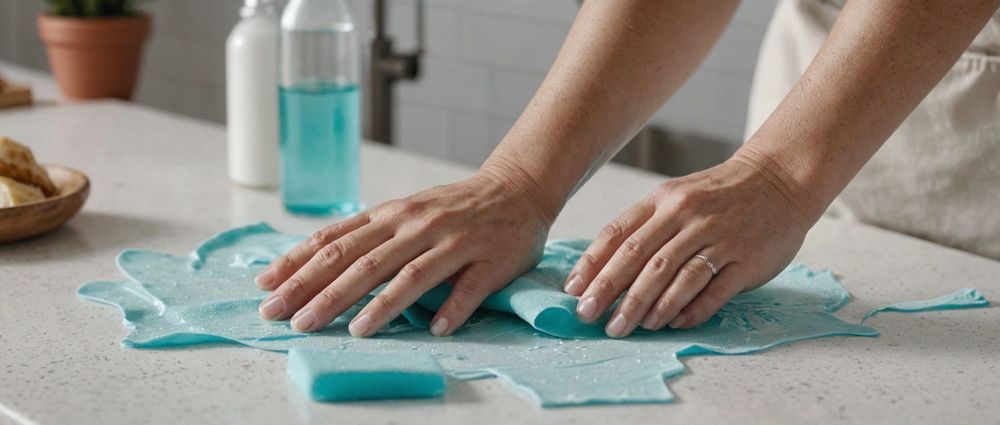Oil stains can be a frustrating challenge when it comes to keeping your clothes looking pristine. Thankfully, there are several effective techniques to remove these unsightly marks, and with the right approach, your favorite garments can be restored to their original glory. In this article, we will explore various methods for tackling oil stains, ensuring that you have the knowledge and tools to combat this common issue effectively.
Understanding the Nature of Oil Stains

Oil stains are particularly stubborn because of their chemical composition. Unlike water-soluble stains, which can be easily lifted with regular washing, oil stains follow a different game plan. They tend to bind tightly to fabric fibers, making it essential to use specific treatment methods. Here’s why you should care:
- Oil stains can come from various sources, including cooking oils, lubricants, or even cosmetics.
- Quick action is often necessary; the longer the oil sits, the harder it becomes to remove.
- Not all fabrics respond the same way to oil; delicate fabrics may require gentler treatment.
- Certain home remedies can be just as effective as commercial products.
- Knowing your fabric type can help prevent damage during the cleaning process.
Preparing to Remove Oil Stains

Before diving into stain removal, it’s essential to prepare properly to ensure the best results. Here are steps to take before treating the stain:
- Act quickly. Prompt treatment gives you the best chance of success.
- Identify the fabric of your garment. Different materials may require specific treatment methods.
- Blot the stain gently with a paper towel to remove excess oil, but do not rub, as this can set the stain further.
- Choose your stain treatment method based on the fabric type and stain severity, from household items to commercial stain removers.
- Perform a patch test on an inconspicuous area if using a new product to avoid mishaps.
Effective Methods for Oil Stain Removal
Various methods can help you tackle stubborn oil stains effectively. Here, we will outline both home remedies and commercial products that are often used in these scenarios:
- Dish Soap: Because it’s designed to cut grease, dish soap is fantastic for oil stains. Apply it directly to the stain, let it sit for 5-10 minutes, then rinse with warm water.
- Baking Soda: This versatile product can absorb oil. Sprinkle baking soda on the stain, let it sit for about 30 minutes, then brush it off before laundering.
- Baby Powder or Cornstarch: Similar to baking soda, these powders can absorb moisture and oil. Apply in the same manner as baking soda.
- Commercial Grease Remover: If home remedies are not effective, commercial products designed specifically for grease and oil stains can be very effective. Follow the instructions on the label.
- Washing with Hot Water: After applying your chosen method, wash the clothing in the hottest water safe for the fabric. This step can help lift the stain completely.
Post-Treatment Care
After treating the oil stain, it’s crucial to take specific post-treatment steps to ensure the stain is fully removed and to maintain the integrity of the fabric:
- Check Before Drying: Always check if the stain is completely gone before putting the garment in the dryer. Heat can set the stain, making it virtually permanent.
- Repeat If Necessary: For particularly stubborn stains, repeat the treatment process until you achieve the desired results.
- Store Properly: Keep your clothes in a dry place, as moisture can lead to mold or additional staining.
- Read Care Labels: Always follow the care instructions on the garment to avoid damage during washing and drying.
- Seek Professional Help: If you’re dealing with delicate fabrics or high-value items, consider taking them to a professional cleaner.
Conclusion
Removing oil stains from your clothes can be a daunting task, but with the right techniques and quick action, you can effectively restore your garments. Whether you decide to use home remedies like dish soap or baking soda or opt for commercial stain removers, understanding the nature of oil stains and preparing properly are vital steps towards success. Regular maintenance and prompt action can keep your clothes looking their best, allowing you to regain confidence in your wardrobe.
FAQs
1. Can I use vinegar to remove oil stains?
Vinegar may not be the best option for oil stains, as it’s more effective on water-soluble stains. However, it can be used as a complementary treatment along with dish soap.
2. Will washing my oil-stained clothes help?
Regular washing might not completely remove oil stains since they require specific treatment to penetrate and break down the oil. Treating the stain before washing is recommended.
3. Is it safe to use bleach on oil stains?
Bleach is generally not recommended for oil stains, as it may discolor fabric and not effectively target oil. Stick to grease-fighting detergents instead.
4. Can I use a hairdryer to dry my clothes if the stain is still visible?
No, avoid using heat to dry clothes with visible oil stains, as this will set the stain. Always check for stain removal success before applying heat.
5. How can I prevent oil stains in the future?
To prevent oil stains, be cautious with food and cooking. Use aprons when cooking and avoid leaning against surfaces with oils. Immediate blotting can also prevent stains from setting.
